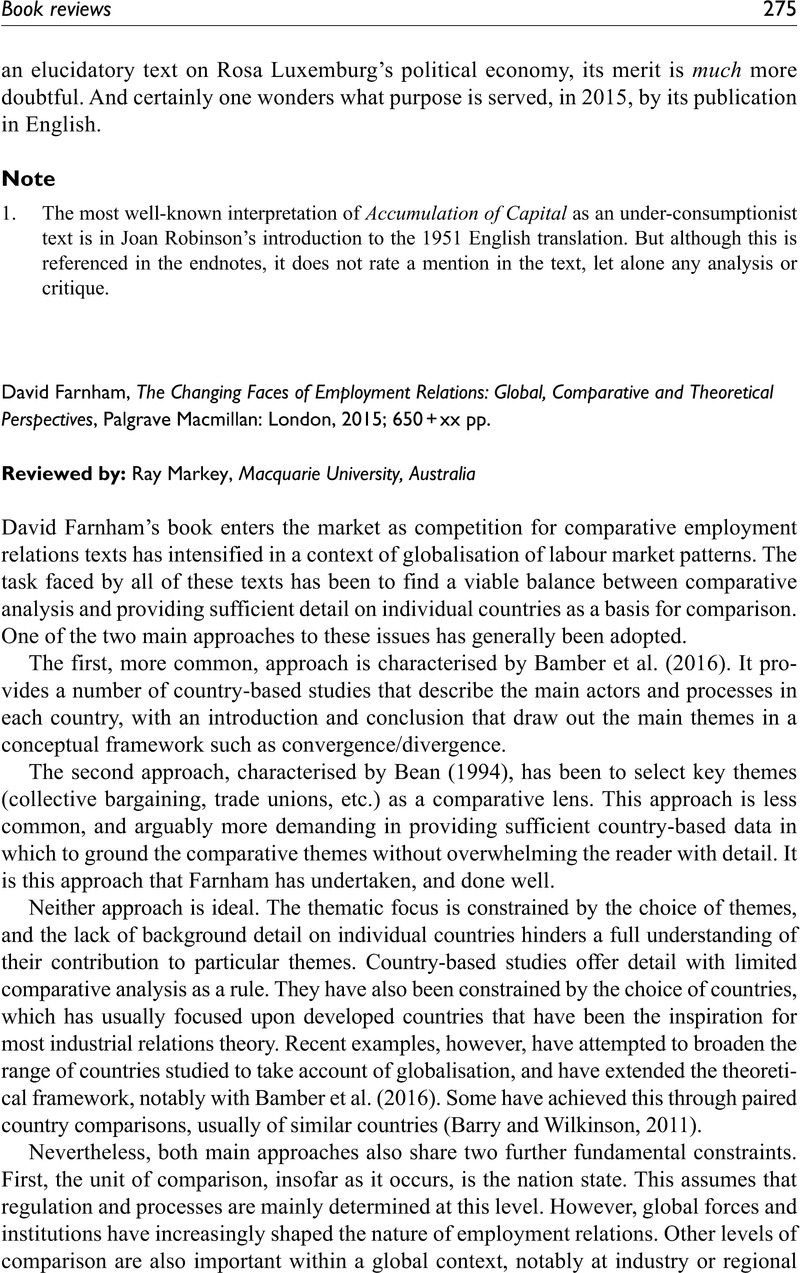No CrossRef data available.
Article contents
David Farnham, The Changing Faces of Employment Relations: Global, Comparative and Theoretical Perspectives, Palgrave Macmillan: London, 2015; 650 + xx pp.
Review products
David Farnham, The Changing Faces of Employment Relations: Global, Comparative and Theoretical Perspectives, Palgrave Macmillan: London, 2015; 650 + xx pp.
Published online by Cambridge University Press: 01 January 2023
Abstract
An abstract is not available for this content so a preview has been provided. Please use the Get access link above for information on how to access this content.

- Type
- Book reviews
- Information
- Copyright
- © The Author(s) 2016
References
Bamber, GJ, Lansbury, RD, Wailes, N, et al
. (eds) (2016) International and Comparative Employment Relations: National Regulation, Global Changes. 6th ed. Sydney, NSW, Australia: Allen & Unwin.Google Scholar
Barry, M, Wilkinson, A
(2011) Research Handbook of Comparative Employment Relations. Cheltenham: Edward Elgar.CrossRefGoogle Scholar
Bean, C
(1994) Comparative Industrial Relations: An Introduction to Cross-National Perspectives. 2nd ed. London: International Thomson Business.Google Scholar


